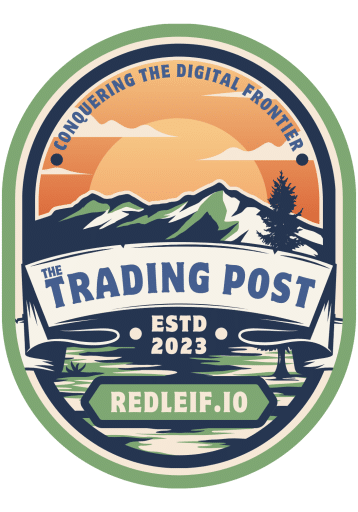
ABCs… Always Be ‘Cruitin
ABCs… Always Be ‘Cruitin Recruiting top technology talent in the public sector is one of the hardest and most important jobs for CIOs and technical leaders. It’s a constant battle, but also a constant opportunity. The organizations that treat recruiting as an ongoing strategy, not…
Share this post:
ABCs… Always Be ‘Cruitin
Recruiting top technology talent in the public sector is one of the hardest and most important jobs for CIOs and technical leaders. It’s a constant battle, but also a constant opportunity. The organizations that treat recruiting as an ongoing strategy, not a one-time task, set themselves up for long-term success.
Why Recruiting Never Ends
Bosses start recruiting when there’s a vacancy; leaders “always be ’cruitin’.” They keep an informal bench in mind – people they’ve met at events, promising interns, or early-career professionals they’ve mentored. That mindset means you’re never starting from zero when a key role opens.
Think in “tours of service,” not careers-for-life. Public sector leaders can attract incredible talent if they stop expecting people to promise 20 years. Some of your best hires may be mid-career professionals looking to step away from the private sector for 3–5 years to do meaningful work and broaden their skill set.
- Turnover is natural (and often a success). The goal should be to support and develop employees to the point where they outgrow their current role. That could mean taking on new responsibilities, earning an internal promotion, becoming a peer at another agency, or landing their dream job elsewhere. Every time that happens, your agency proves it’s a place where careers grow – and that reputation attracts the next wave of talent. In fact, it should even be part of your pitch in interviews: “We don’t expect you to stay forever. Our goal is to help you grow so that this role becomes the launchpad for whatever comes next.”
- Pipeline as strategy. A steady flow of new talent ensures you’re prepared for retirements, promotions, and inevitable departures.
- Reputation compounds. Each person who joins and thrives (or doesn’t) shapes how future candidates perceive your organization.
The “Next Next Job” Mindset
Too often, candidates think only about the next role. Forward-thinking leaders encourage them to think about the next next job.
- This role may not check every box today, but it can give you the experience, network, and credibility that open doors later.
- Public sector experience often provides exposure to scale, complexity, and decision-making that few private sector roles can match, especially early in careers.
- Framing the opportunity this way helps candidates see beyond immediate trade-offs (like salary) and understand how the role accelerates long-term career growth.
A simple example:
- Path A (Private Sector First Job): Analyst at a consulting firm, $70K salary. Likely next job? Senior Analyst or Specialist, $85K.
- Path B (Public Sector First Job): IT Specialist at a state agency, $60K salary. Next job? Cybersecurity Lead or Deputy CIO, $95K–$110K, with management exposure.
The second path may start with less money, but it can accelerate someone into more advanced opportunities faster because the experience and responsibility are broader, earlier. Whether that means stepping into leadership or simply opening more doors for specialized roles, the exposure can move a career forward in ways the private sector path might not.
The Public Sector Advantage
Public agencies may not always compete on pay, but they can compete on value:
- Fulfillment and purpose (make it tangible). It’s not enough to say “you’ll make a difference.” Leaders should connect the dots: “You’ll have the opportunity to play a pivotal role in implementing new software systems,” or “This role could give you the chance to modernize how millions of residents access healthcare services,” or “You may help streamline licensing processes that affect every business in the state.” These aren’t abstract promises—they’re experiences that build pride and lasting impact.
- Responsibility early. Public sector roles often give employees broader ownership sooner than the private sector. That could mean evaluating new technologies, influencing IT strategy with real input, leading a project, managing a budget, or briefing executives—all within the first few years of a career. Hands-on experience in these areas accelerates growth and sets candidates apart.
- Learning and growth (like a startup). In many agencies, teams are lean and challenges are complex. Staff are stretched across functions, learning rapidly, and taking on responsibilities that build resilience and problem-solving skills. Worst case scenario? You learn more in two years than you otherwise might have in five in a corporate job.
Competing Creatively for Talent
- Lead with curiosity. Start by asking candidates what matters most to them. Align to their motivators. Understand what they care about that you can offer: responsibility, growth plans, mentorship, flexibility, or future recommendations based on performance.
- Tell the career story. Don’t just sell the role, sell where it can lead. Position the opportunity as a stepping stone to future roles, even outside your agency.
- Offer responsibility and visibility. Give candidates clear examples of where they’ll have ownership and how their work will be seen by executives or the public.
- Stop narrowing the pool. Minimum years of experience and long certification checklists make recruiting harder – and they screen out talented people who could thrive. Instead, look for what actually predicts success: drive, curiosity, coachability, and the ability to work well on a team. Loosening rigid prerequisites expands the pool to motivated candidates who might otherwise be shut out but can grow quickly with the right support.
- Invest in culture and reputation. A supportive work environment and engaged alumni network can become recruiting tools in themselves.
- Recruit everywhere. Universities, professional associations, industry groups, community events – always be ‘cruitin, not just when a job opens.
- Simplify the process. Long, outdated hiring systems are a barrier. Reducing friction shows candidates you value their time and keeps them from leaving for other offers while your process drags on. The old saying “time kills deals” rings true in recruiting as well.
- Leverage Digital Scholars and apprenticeships. Partner with universities, colleges, and workforce groups to offer paid apprenticeships where students earn course credit while working in real roles. Schools supply talent and credit; you provide the experience and pay that accelerates skills and builds a future bench.
Turning Challenges Into Strengths
Recruiting in the public sector comes with its own realities: Turnover is inevitable, resources are limited, environments are demanding, and projects often stretch across agencies under public scrutiny. But those same factors can become unique strengths that set your agency apart when competing for talent.
- Turnover becomes advocacy. When employees grow and move on, they carry your agency’s brand with them. That alumni effect makes recruiting easier down the line.
- Getting thrown into the fire. Public sector jobs often throw people into tough situations early—limited resources, high stakes, broad scope. It can feel stressful in the moment, but it accelerates development in ways that most private sector jobs can’t replicate.
- Stories that stand out. Candidates who leave with “war stories” about modernizing outdated systems, delivering mission-critical projects, or serving during high-demand periods have experiences that make them stand out in interviews later.
- Navigating complexity. Public sector employees face bureaucracy, policy constraints, and public scrutiny while working across multiple departments or agencies. Projects can take years to complete, requiring persistence and patience. This environment builds resilience, collaboration skills, and the ability to deliver results in complex, high‑stake situations.
- Visibility and accountability. Public sector work happens under the spotlight of media, legislatures, and the public. That pressure can be tough, but it builds credibility and teaches employees how to operate in high‑transparency environments.
- Budget constraints. Limited budgets force teams to be resourceful, creative, and disciplined. Employees learn how to stretch resources, prioritize ruthlessly, and deliver impact without excess.
The narrative shift matters: yes, there are challenges, but those challenges create unique opportunities. Agencies that own this message—that public sector roles give you a chance to do hard things, grow fast, and leave with stories no one else can tell—become magnets for ambitious talent.
Closing Thought
In public service IT, the ABCs really are Always Be ‘Cruitin. Recruiting never ends, because the work never stops evolving. The leaders who embrace creativity, curiosity, and long-term vision will build teams that deliver today while preparing talent for tomorrow.
Last updated: October 10, 2025

Accelerating the Modernization and Security of Public Sector Data
No matter what islands you need help navigating in the public sector, RedLeif can help.
The public sector is uniquely made up of a diverse set of stakeholders – each with their different rules, regulations, incentive structures, let alone all the acronyms. It’s as if there are independent stakeholder islands, each with really important functions, that are both completely foreign to each other and completely dependent upon each other.


